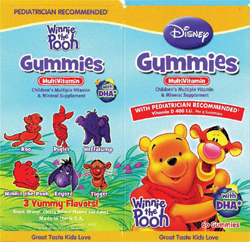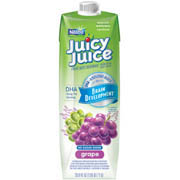Omega-3s in infant formula: time for a close look
The FDA just announced that it is planning to research health claims on infant formulas such as “supports brain and eye development.’’ The FDA wants to:
assess women’s understanding of and response to various statements on infant formula labels. The study results will be used to help the Agency to understand the role that certain types of statements on infant formula labels have in influencing formula choice….The study will focus on purchase choice, perceived similarity of the formula to breast milk, and perceived likelihood that the formula has certain health benefits.
Translation: the FDA thinks that claims for omega-3 fatty acids—DHA, in this case—on infant formulas mislead mothers into thinking the formulas are better than breast milk.
Despite lack of evidence for benefits, infant formula makers have been so successful in marketing the addition of these omega-3 fatty acids that you can hardly buy a formula without them.
I was in Ecuador a few months ago and saw this sign:
The idea? Omega-3’s will make your kid smart.
My book, What to Eat, has a chapter on infant formula and baby food. Here are some relevant excerpts:
Infant formulas cause controversy and are endlessly contentious for three important reasons. Formulas are (1) largely unnecessary (most mothers can breast feed their infants), (2) not as perfect as breast milk for feeding babies, and (3) more expensive than breast feeding.
Breast milk is nutritionally superior to formula, but from a marketing standpoint it has one serious disadvantage: it is free. Beyond one-time purchases of breast pumps, storage bottles, or special clothing, nobody makes money from it.
For mothers who cannot, should not, or do not want to breast feed, formula is a socially and nutritionally acceptable substitute. But formula companies do not only promote formulas to mothers who must use formula. In subtle and not-so-subtle ways, they promote the use of formulas to all pregnant women and new mothers.
I go on to explain that because formula is the sole food for infants, its composition is highly regulated. Therefore, all infant formulas have the same composition, and all virtually indistinguishable.
Competition for market share explains why formula companies want to put distinctive nutrients in their formulas–especially nutrients considered “conditional.” A conditional nutrient is one that might have some benefits under some circumstances. Even if the health benefits are minimal or questionable, they can be used in advertising.
That is the principal reason why so many formulas now have fatty acids added—omega 6 arachidonic acid (ARA) and omega-3 docosahexaenoic acid —the same one that is in fish oil. These two fatty acids are normally present in breast milk, and there is some evidence, weak and questionable as it may be, that they support infant brain development and vision.
Formula makers got the FDA to agree that ARA and DHA are normal components of food (which they are) and, therefore, are Generally Recognized As Safe (GRAS). This means that companies could add ARA and DHA to infant formulas without having to prove that either of them really did anything useful or beneficial.
I then explain that the FDA apparently agreed to the GRAS petition with some reluctance, as indicated by its answer to the question, “What is the evidence that addition of DHA and ARA to infant formulas is beneficial?”
The scientific evidence is mixed. Some studies in infants suggest that including these fatty acids in infant formulas may have positive effects on visual function and neural development over the short term. Other studies in infants do not confirm these benefits. There are no currently available published reports from clinical studies that address whether any long-term beneficial effects exist.
My interpretation of the proposed research study is that the FDA thinks the addition of ARA and DHA may discourage mothers from breastfeeding and may unnecessarily cause them to buy more expensive formula.
If you agree, tell the FDA you think the study is a great idea, and the sooner it gets going, the better.
You can file comments at http://www.regulations.gov. Refer to Docket No. FDA–2011–N–0098]




